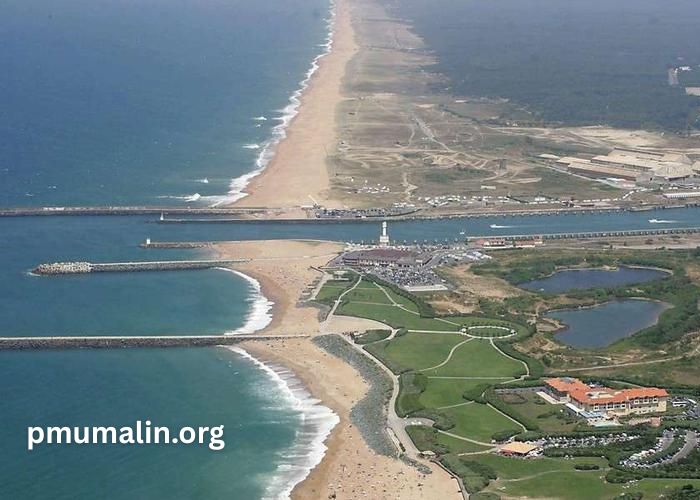The Evolution Des Cotes is a captivating journey of how coastlines change shape, erode, and regenerate over time due to both nature and human influence. These transformations span centuries, showcasing a fragile balance between land and sea that reflects both geological and climatic factors.
Understanding Evolution Des Cotes is essential not only for environmentalists and geographers but also for governments and communities residing near coastal areas. The interaction between oceanic elements and anthropogenic pressures has made this topic a focal point in the broader context of climate change and sustainability efforts.
What Are The Key Factors Influencing Evolution Des Cotes?
The Evolution Des Cotes is influenced by a wide variety of natural factors including wind patterns, wave action, tides, and sea-level rise. These elements act continuously over time, reshaping shorelines by depositing or removing sediments, sometimes altering coastlines dramatically after significant weather events like hurricanes and tsunamis.
Alongside nature, human intervention plays a vital role in the Evolution Des Cotes, especially in densely populated areas. Activities like coastal development, dredging, and the construction of seawalls, jetties, and ports can either accelerate erosion or artificially maintain certain shoreline features. Urbanization near the coasts has escalated the pace and unpredictability of changes in these fragile zones.
How Do Natural Disasters Affect The Evolution Des Cotes?
Storm surges, hurricanes, and tsunamis dramatically accelerate the Evolution Des Cotes by forcefully eroding existing landforms and depositing new materials elsewhere. These powerful natural disasters can cause sudden transformations that would normally take decades, shifting sediment and even creating new landmasses in rare instances.
The impact of such disasters on Evolution Des Cotes is not just geological but also socio-economic, affecting coastal communities through loss of property, changes in fishing zones, and alteration of habitats. These events often reveal the weaknesses in coastal defense mechanisms and prompt long-term reassessments of regional planning and resilience strategies.
How Does Climate Change Influence Evolution Des Cotes?
Climate change is perhaps the most pressing long-term driver of Evolution Des Cotes, primarily through rising sea levels and increased storm frequency. As polar ice melts and oceans expand thermally, shorelines retreat, inundating wetlands, displacing communities, and permanently altering the character of coastal regions.
With temperatures rising, the Evolution Des Cotes continues to exhibit new patterns such as more frequent tidal flooding and saltwater intrusion into freshwater systems. These trends present major challenges to agriculture, infrastructure, and biodiversity in low-lying coastal areas, making adaptation plans more urgent than ever.
What Is The Role Of Human Activity In Shaping Evolution Des Cotes?
Construction and urban development have had profound effects on Evolution Des Cotes, often disrupting the natural processes of sediment transport and shoreline renewal. Structures like dams and levees upstream reduce sediment delivery to the coasts, while beachfront properties and roads restrict the inland migration of shorelines.
In tourist destinations and economically strategic coastal zones, the pressure to maintain beaches and harbors has led to artificial interventions in the Evolution Des Cotes, such as beach nourishment and engineered dune systems. While temporarily effective, these solutions sometimes create long-term dependency on continuous human involvement for coastal preservation.
How Do Governments And Communities Manage Evolution Des Cotes?
Governments around the world are increasingly adopting integrated coastal zone management (ICZM) to address the complexities of Evolution Des Cotes. This includes regulatory frameworks, monitoring systems, and investment in both hard (e.g., seawalls) and soft (e.g., vegetation restoration) engineering solutions aimed at resilience.
Communities affected by Evolution Des Cotes are also playing proactive roles, including participation in habitat conservation, citizen science projects, and sustainable fishing practices. Engaging local stakeholders ensures that adaptive measures are culturally relevant, economically viable, and environmentally sound in the long term.
What Are The Future Trends In The Evolution Des Cotes?
As technology advances, the ability to predict and model Evolution Des Cotes has become more sophisticated, involving AI simulations, drone mapping, and satellite imagery. These tools help forecast erosion rates, identify vulnerable zones, and support data-driven policymaking.
Future Evolution Des Cotes trends suggest increased hybrid approaches combining nature-based solutions with selective infrastructure. Emphasis is shifting toward working with nature—such as through wetland restoration and managed retreat—rather than fighting against it. The global challenge lies in scaling these solutions across various socio-economic and climatic contexts.
Conclusion
In essence, the Evolution Des Cotes is a testament to the ever-changing relationship between land and sea, influenced by forces ranging from the slow grind of geological time to the immediacy of human activity and climate disruption.
As coastlines continue to transform, understanding and managing the Evolution Des Cotes becomes not just an academic pursuit but a necessity for sustainable living and resilience. With increased collaboration, innovation, and awareness, humanity has the opportunity to adapt intelligently to the changing boundaries of the Earth’s shores.
